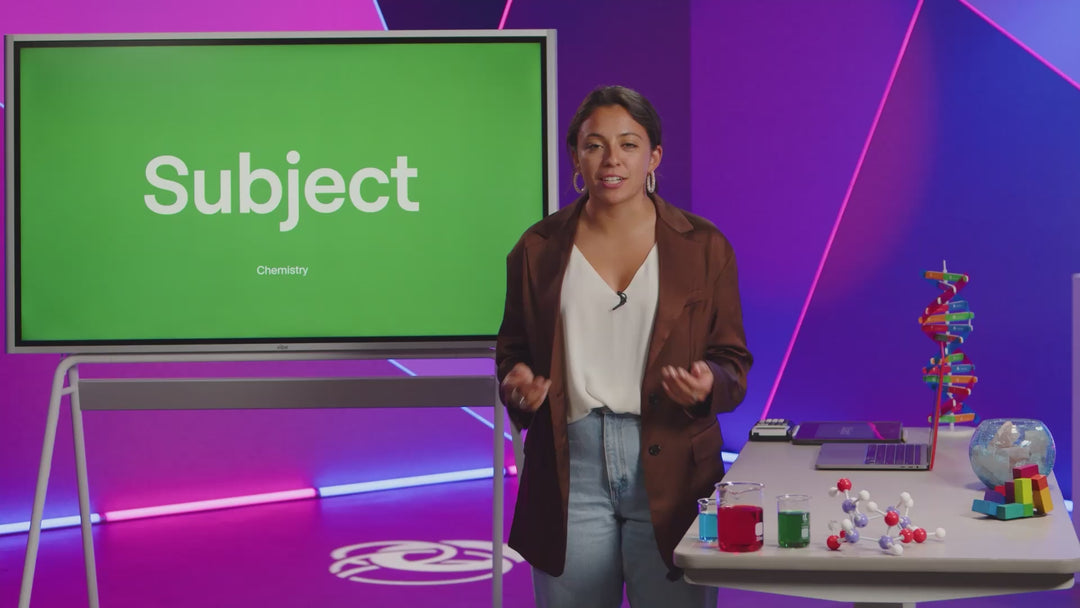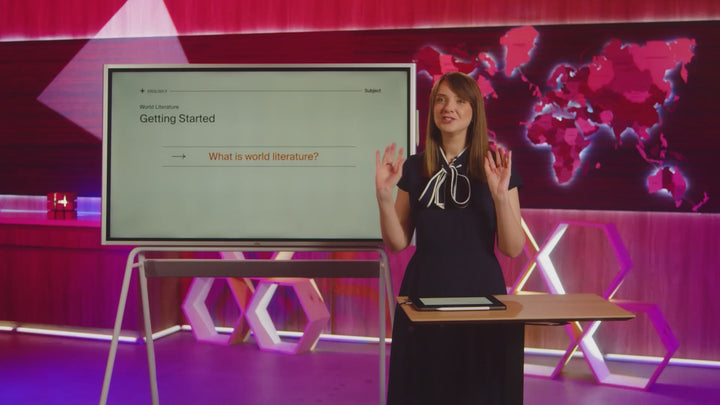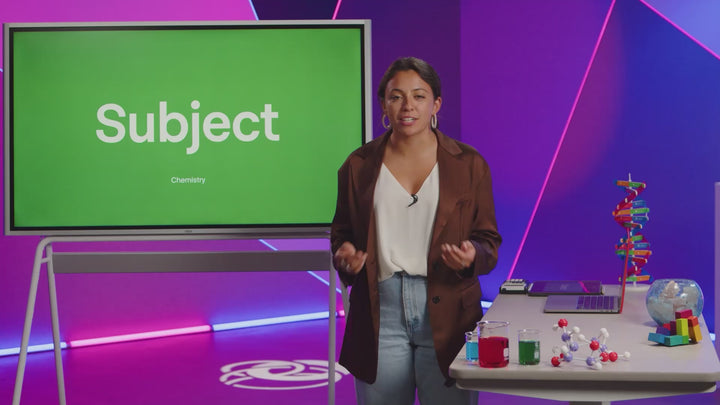Tenth Grade Curriculum
- 7 courses included
- Update grade level anytime
- 14-day satisfaction guarantee*
Subscribe more students, save more!
10% off
2 students
20% off
3-5 students
25% off
6+ students
Designed for the way modern teenagers learn, our Cinema Series tenth grade curriculum offers relatable teachers, studio visuals, and concise segments that support independent learning. Students build on foundational skills by strengthening their critical thinking, analytical reading, effective communication, and independent learning strategies to support deeper academic engagement and personal growth.
In English II, students develop foundational written and verbal communication skills by analyzing global texts, exploring diverse identities and societies, and crafting reflective and analytical arguments.
In Geometry, students deepen their understanding of geometric relationships by analyzing properties of shapes, applying algebraic reasoning, and constructing formal arguments, building spatial thinking skills.
In Chemistry, students explore key chemistry concepts—such as scale, structure, transformations, and energy—through inquiry-based investigations, building scientific thinking and problem-solving skills.
In World History, students examine global cultural, economic, political, and social developments, using historical thinking and reasoning skills to make connections across time, place, and systems.
Students can create a unique schedule by choosing from electives options or by adding on a foreign language.
Most popular core courses for tenth graders include:
- English II - Develop well-supported arguments, gain understanding of universal themes in literature, and explore career paths in journalism and communications
- Geometry - Investigate properties of figures, make conjectures, and prove theorems.
- Chemistry - Explore the composition, properties and changes of matter.
- World History - Discover major events and turning points of world history from ancient times to the present.
Tenth graders choose from the following elective options:
- Drawing I
- Photography I
- Introduction to Engineering
- Health Education
- Physical Education
- Financial Literacy I: Personal Finance
- Financial Literacy II: Budgeting & Investment
- Music Production and Digital Media
- Introduction to Computer Science
Math Alternatives:
- Algebra I
- Algebra II
- Pre-Calculus
- Advanced Math & Trigonometry
Science Alternatives:
- Biology
- Introduction to Engineering
- Physics
Social Studies Alternatives:
- United States History
- United States Government & Politics
- Economics
English II
- Chapter 1: Exploring World Literature
- Chapter 2: The Odyssey
- Chapter 3: Culture and Legacy
- Chapter 4: Good and Evil
- Chapter 5: War and Humanity
- Chapter 6: Technology and Ethics
- Chapter 7: Family and Community
- Chapter 8: Love and Sacrifice
Geometry
- Chapter 1: Lines, Angles, and Measurement
- Chapter 2: Proofs
- Chapter 3: Triangle Relationships
- Chapter 4: Quadrilaterals and Other Polygons
- Chapter 5: Special Triangles
- Chapter 6: Trigonometric Relationships
- Chapter 7: Circles
- Chapter 8: Two-Dimensional Models
- Chapter 9: Three-Dimensional Models
- Chapter 10: Probability
Chemistry
- Chapter 1: Measurement and Matter
- Chapter 2: The Periodic Table and Atomic Structure
- Chapter 3: Chemical Bonding and Chemical Reactions
- Chapter 4: Stoichiometry
- Chapter 5: Gasses and Gas Laws
- Chapter 6: Energy in Chemical Reactions
- Chapter 7: Reaction Rates
- Chapter 8: Solutions
- Chapter 9: Acids and Bases
- Chapter 10: Nuclear Chemistry
World History
- Chapter 1: Introduction to World History
- Chapter 2: The Effects of Political Revolution
- Chapter 3: A World Transformed – The Industrial Revolution
- Chapter 4: The New Imperialism – Resource Competition, Colonialism, & the Expansion of Empire
- Chapter 5: World War I: Total War 1914–1918
- Chapter 6: The Interwar Period 1919–1939
- Chapter 7: World War II & the Holocaust 1939–1945
- Chapter 8: The Cold War, Decolonization, & Economic Growth – 1945–1991
- Chapter 9: Our World Since 1991























